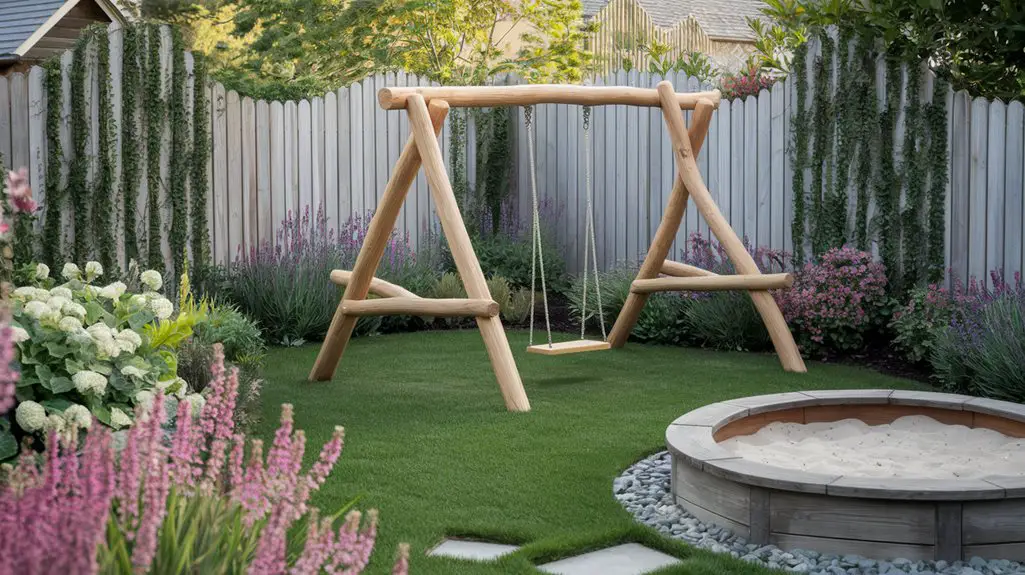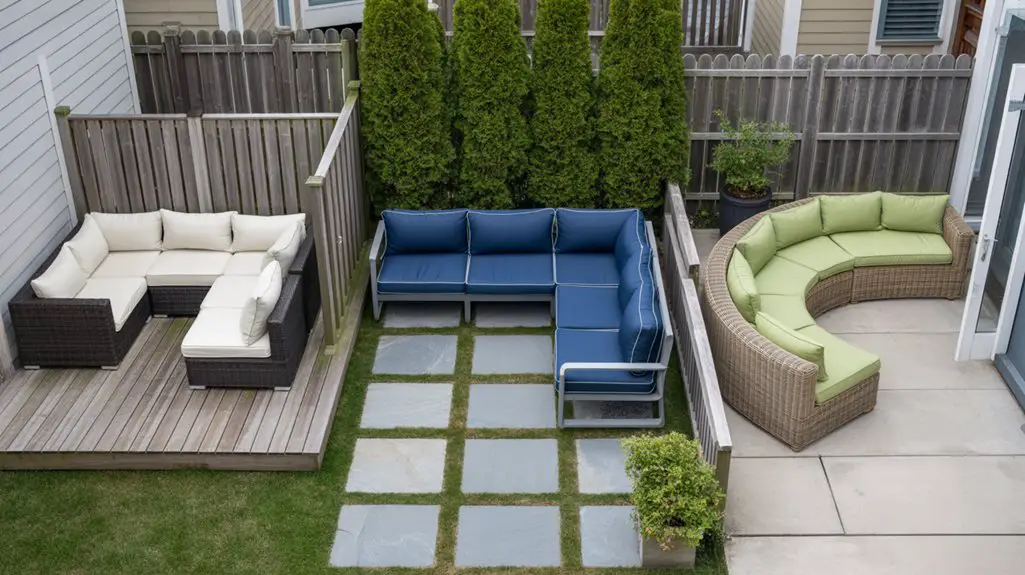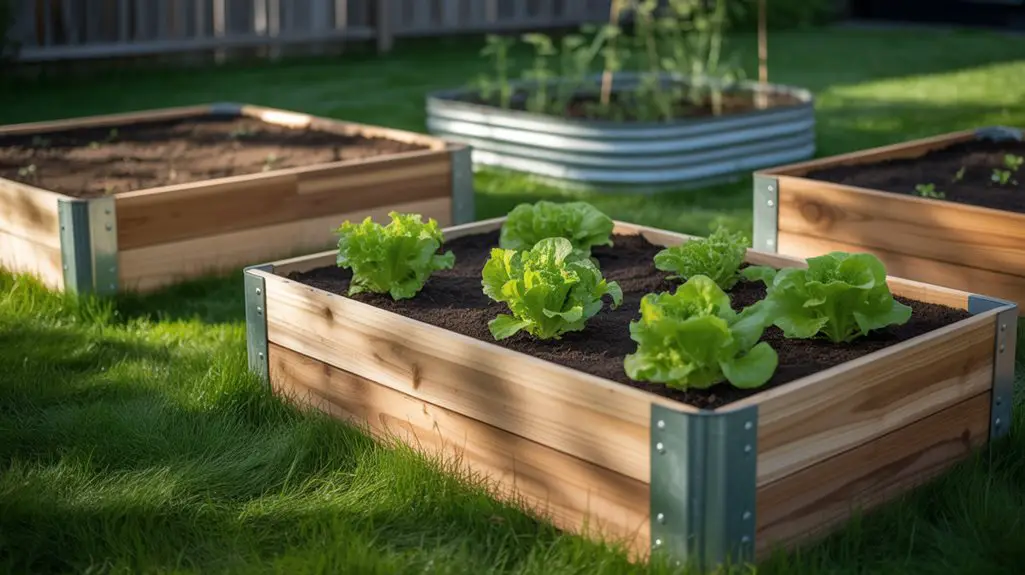The notion that children thrive in thoughtfully designed outdoor spaces isn’t merely theoretical—it’s supported by decades of developmental research. When you transform your backyard into a play area, you’re creating more than entertainment; you’re building an environment that shapes physical capabilities, cognitive development, and imaginative potential. Your landscape choices directly impact safety, engagement levels, and the longevity of your investment in ways many homeowners fail to anticipate until after mistakes have been made.
Creating Safe, Shock-Absorbent Surfaces for Fall Zones
When planning a backyard play area, establishing proper shock-absorbent surfaces beneath equipment is essential for child safety.
You’ll need a minimum depth of 9-12 inches of loose-fill materials like engineered wood fiber, rubber mulch, or sand extending at least 6 feet in all directions from play structures.
For equipment over 4 feet tall, extend your safety surface farther—approximately 9 feet from the structure’s edge.
Unitary surfaces such as poured-in-place rubber or rubber tiles offer excellent impact attenuation with less maintenance than loose materials. They’re particularly useful in high-traffic zones or areas with drainage concerns.
Remember to install proper edging and drainage systems to maintain material depth and prevent waterlogging.
Regularly inspect surfaces for compaction, debris, and adequate depth, raking and replenishing materials as needed to maintain their shock-absorbing properties. Additionally, incorporating effective drainage systems can help prolong the lifespan of your safety surfaces.
Incorporating Natural Elements and Sensory Play Opportunities

Beyond safety surfaces, natural elements considerably enhance play area value by stimulating children’s senses and imagination. Incorporate strategically placed boulders, logs, and stumps that serve as informal seating while doubling as balance challenges.
These elements create microhabitats that attract beneficial insects and foster ecological awareness.
Integrate sensory gardens with aromatic herbs like lavender and mint alongside textured plants such as lamb’s ear. Install water features with adjustable flow rates—simple stream beds with smooth river rocks provide tactile exploration opportunities while teaching basic hydraulic principles.
Consider raised planting beds where children can grow vegetables, establishing a connection to food sources. Use different ground materials (sand, pebbles, bark) to create sensory pathways that stimulate proprioception.
For auditory stimulation, install weather-resistant musical elements like chimes or drums constructed from natural materials. Additionally, natural play elements encourage creative play and exploration, allowing children to engage with their environment in meaningful ways.
Designing Flexible Spaces That Grow With Your Children

Creating play spaces that adapt to children’s evolving developmental needs requires strategic planning from the outset.
Implement modular components that can be reconfigured as interests change. Consider convertible structures—climbing frames that transform into sports equipment bases or performance platforms as children mature.
Select materials with longevity in mind: weather-resistant composite decking, adjustable-height swings, and multipurpose surfaces.
Designate zones that can shift from toddler play to teen gathering spaces with minimal renovation.
Install infrastructure that accommodates future modifications: reinforced mounting points for various equipment, conduit for potential lighting, and adequate drainage systems throughout.
Document buried utilities and structural supports to facilitate safe modifications later.
You’ll maximize your investment by designing with 5-10 year horizons rather than addressing only immediate developmental stages. Additionally, incorporating backyard activities that encourage creativity and physical engagement can further enhance the play experience.
Conclusion
Like a sapling that thrives with room to grow, your play area’s evolution mirrors your child’s development. You’ve established a protective foundation with shock-absorbent surfaces, cultivated sensory-rich environments that connect them to nature’s classroom, and implemented adaptable designs that accommodate their changing needs. This integrated approach doesn’t merely create a playground—it constructs a developmental ecosystem where safety, exploration, and flexibility converge to nurture growth.




